Trainings
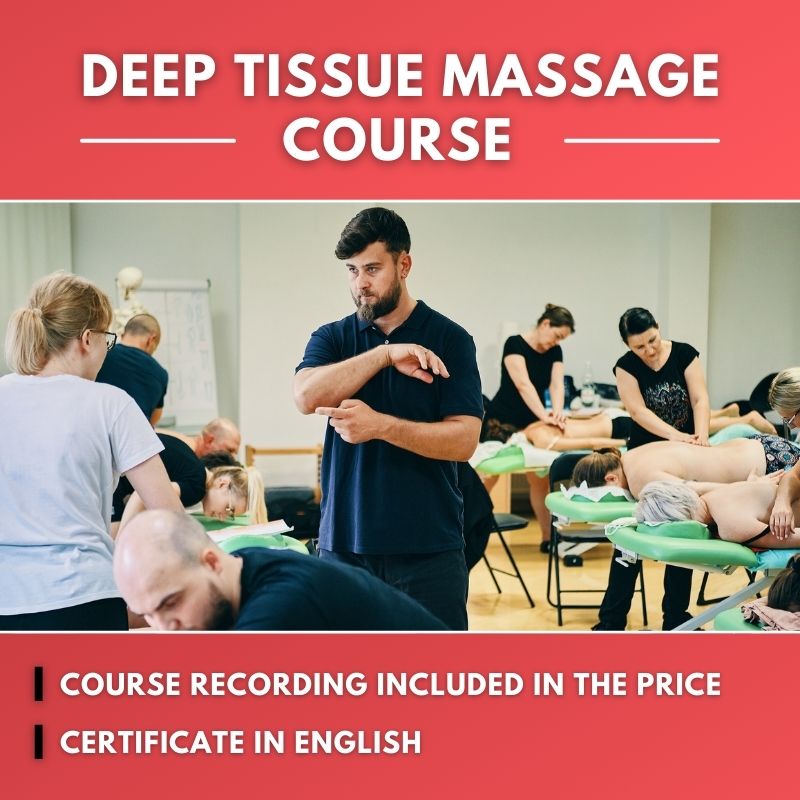
Deep Tissue Massage Course
Price: PLN 2970 (40 hours + video recording)
- LEADERS: Piotr Szalanski, PhD, PT, CAPSI and Lukasz Czubaszewski, PhD, PT, Osteopath
- COURSE DURATION: 5 training days (40 clock hours).
- We don’t require you to work on your own before training with us!
- TRANSLATION: The entire course is conducted in English.
- PRICE: PLN 2970 (PLN 600 recruitment fee + PLN 2370 remaining amount payable before the course).
- WHO IS THIS COURSE FOR?: physiotherapists, masseurs, personal trainers and all specialists working with the human body.
The training can also be attended by students of physiotherapy, massage, physical education, medicine. - ACCREDITATION: Training accredited by REPs Polska. Type of qualification: “Specialized Course In The Fitness Industry – EQF level 5”
- CERTIFICATE: Each training participant receives a certificate of completing the training “DTM and myofascial relaxationis”.
- We will announce the date and place soon.
Join over 4,800 satisfied graduates of the Deep Tissue Massage course and gain a certificate and knowledge at an international level.
During the training you will receive practical training in Deep Tissue Massage (DTM) and myofascial release techniques.
Description
Deep Tissue Massage is a concept of manual myofascial work. It includes both accurate functional and analytical diagnostics and therapeutic measures to improve health, function and pain relief. It is a way to understand the layered, three-dimensional arrangement of tissues in the body.
Benefits for you:
- You will learn holistic thinking and a structural approach to your patient’s body.
- You will learn techniques for working with each part of the body.
- Together with you, we will create a therapy plan for your patient.
- You will learn to draw conclusions based on interview, postural analysis and palpation.
- You will practically implement therapies in the most common clinical cases.
- And most importantly, you will gain the most up-to-date knowledge and skills that you will immediately apply to your patients.
Knowledge of anatomy and the ability to use all the components of the DTM concept make it extremely effective in the treatment of ailments of myofascial origin. This type of work is a typical therapeutic approach aimed at reducing pain. It also uses special posture positions, which, combined with tissue work, have a great ability to increase the range of motion of joints and tissues.
All this makes it one of the most effective forms of therapy in cases of chronic ailments and static overload. It is an ideal form of work for people who suffer from pain due to their work or incorrect movement habits. It also works well for athletes who require extreme tissue flexibility so that they do not suffer from overload injuries.
Deep Tissue Massage can be used as a preventive treatment for physically active people. It is also very effective in the case of posture defects. Find out more about the method, techniques and tools of working at DTM.
The only teachers of Deep Tissue Massage in Poland, recommended by Art Riggs – Łukasz Czubaszewski and Piotr Szałański, invite you to the course of Deep Tissue Massage and Myofascial Relaxation with Palpation Anatomy.
Check out what you get from us additionally in the course price:
- Professional video recording of the entire training with us, available on our VOD platform. The whole thing is translated into English. It will be available to you anytime and anywhere, on any of your devices. That’s why you don’t have to take a camera with you, record the training on your phone. You can simply focus only on workshop work and training with us. And later, whenever you want, you can go back to the recordings from each day and recall every technique learned with us on the Deep Tissue Massage course.
- Each graduate will receive a certificate in English confirming the completion of the full training (5 days = 40 hours).
Agenda
- Day 1 Introduction to DTM - Theory and practice
9:00-11:00
Introductory lecture, part 1: Deep tissue massage (MTG) and its Roots in Structural Integration.11:00-11:15
Break I11:15-13:00
Introductory lecture part 2: Fascial Anatomy and Physiology and the world of Fascial Science.13.00 – 14.00
Lunch break14:00-16:00
Tools used in DTM.16:00-16:15
Break II16:15-18:00
Techniques used in DTM, Part I. - Day 2 Back and belly
9:00-11:00
Techniques used in DTM, Part II / exercises of feeling the quality of contact with the tissue and feeling the depth of contact with the tissue11:00-11:15
Break I11:15-13:00
Work with the back part I13.00 – 14.00
Lunch break14:00-16:00
Working with the back part II16:00-16:15
Break II16:15-18:00
Abdominal integuments and diaphragm therapy - Day 3 Core muscles and upper limb
9:00-11:00
The iliopsoas muscles therapy11:00-11:15
Break I11:15-13:00
The Quadratus Lumborum therapy13.00 – 14.00
Lunch break14:00-16:00
Forearm in the context of carpal tunnel16:00-16:15
Break II16:15-18:00
Forearm in the context of tennis elbow - Day 4 Shoulder girdle and thigh
9:00-11:00
Shoulder and deltoid muscle clinical work11:00-11:15
Break I11:15-13:00
Shoulder girdle – summary of work with the upper limb13.00 – 14.00
Lunch break14:00-16:00
Front of the thigh in the context of pain in the knee joint16:00-16:15
Break II16:15-18:00
Lateral and medial side of the thigh clinical work - Day 5 Neck and suboccipital region
9:00-11:00
Ankle joint and front side of the shin11:00-11:15
Break I11:15-13:00
Front of the neck, clinical work13.00 – 14.00
Lunch break14:00-16:00
Neck and suboccipital zone16:00-16:15
Break II16:15-18:00
Final exam (own work in a selected location).
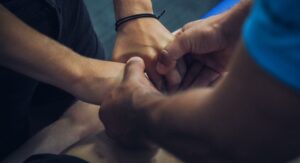
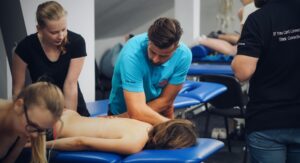
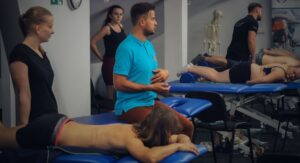 +12
+12FAQ
- Who can take part in a Deep Tissue Massage course?
EVERYONE with basic knowledge of human anatomy and physiology can take part in the training.
We will teach the rest during the course – “step by step” 😉 - What are the hours of the course?
Every day the course starts at 9:00 a.m. and lasts until 6:00 p.m.
- What is the exact address where the course will take place?
Information about the exact address where we will be training will be sent by email to each participant 2 weeks before the start of the course.
- Is catering included in the price of the course?
Yes, the price of the course includes breaks with excellent coffee and tea.
Feedback

I recommend it with all my heart! Professional approach of the lecturers. The course provides a lot of knowledge, which I use on a daily basis in my work with patients and … patients are very pleased! Lots of techniques that can be used in many cases. It does not matter if you are at the beginning of your professional career or you are already an experienced physiotherapist, it is definitely worth taking part in this training!
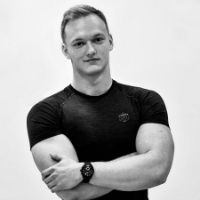
The enormity of knowledge based on the latest scientific reports conveyed in an exceptionally friendly atmosphere by two extremely talented, experienced and always smiling leaders ready to answer any question. Thanks to Łukasz and Piotr, I left the training with a completely new perspective on the possibilities of working with the patient. I would like to recommend the DTM course to students and young physiotherapists who are looking for proven, effective and safe techniques for working with soft tissues, based on the knowledge of the best specialists in Poland.
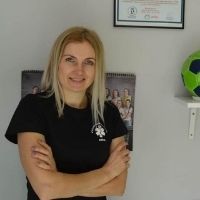
This training gave me great opportunities to work in the office. I can work with most patients with these techniques. You can not only learn this method from the boys, because they always give something “extra”. They answer every question and train the technique until someone grasps it. And when you get to know them, you will stay with them to do other courses from their offer. It was a very fruitful course and I would take it again, if I hadn’t already done it with them. I highly recommend the Deep Tissue Massage course as a supplement to my knowledge in this subject!
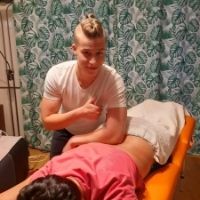
The Deep Tissue Massage course was as amazing as Patrick Swayze in the final Dirty Dancing scene!
In a word- I RECOMMEND!

It is the best money invested in myself that I could spend! Excellent atmosphere, a lot of knowledge, a lot of passion and willingness to transfer knowledge – this training opens the patient’s head like a good escape room – you know what’s wrong, but in fact it’s up to you to find a way to solve the puzzle. I recommend this course to everyone 100%!

I was a participant of an 8-day training in the form of 4×2 days. First of all, it is an incredibly powerful portion of knowledge and practical classes, and this is the most important thing in training. The approach of the guys from DTM is professional and at the same time kept in a pleasant atmosphere. Even though each of them works with DTM techniques, each of them has a slightly different approach, which makes up a coherent whole and a view from many perspectives during the training. The Deep Tissue Massage course is a must for everyone who wants to develop in this field!

Out of the numerous training offer, I chose this 8-day Deep Tissue Massage course, led by Łukasz and Piotr. As it turned out later, it was a hit in the 10th Super organization. Everything in accordance with the program contained on the website. First of all, practice, practice and practice again. Starting from learning specific techniques, through palpation of selected muscle groups and thorough examination and testing of the patient. I definitely recommend this course for knowledge seekers.
Trainers
Deep Tissue Massage as a method
The name of the method
The name “Deep Tissue Massage” could suggest a strong and painful effect on the patient’s body. In fact, this method turns out to be extremely delicate and subtle. All movements are performed with great precision and, additionally, very slowly. The pressure force is applied to each patient individually – matched to the strength of tissue tension.
All this makes the method effective, and the desired effects can be noticed after the first treatment. Such a precise type of work with the patient requires from the therapist exceptionally good palpation and the ability to locate changes in tissues.
Theoretical basis of Deep Tissue Massage
Deep massage is a therapy that works on the layers and layers of tissues not developed in classic or sports massage. It is also a form of programmed therapy for a patient or athlete tailored to a specific individual, not as in sports massage with repeated sequences of movements that are the same for each athlete. With this technique, it is possible to influence the state of muscle and fascial tension, correct defects and heal dysfunctions of the musculoskeletal system.
The specificity of working in Deep Tissue Massage
The main goal of the procedure is to pay attention to changing the structure and limitations of tissue mobility. In this technique, movements are performed extremely precisely. I work very slowly, giving the tissue time for a physiological response and adaptation to new conditions.
Another feature of this type of massage is the use of very little or no lubricants. You work with oblique pressure on the tissues due to the fact that it is better tolerated by the massaged person, besides, the muscle tissue responds well to stretching and shifting, but we cannot afford to press especially against the bone elements.
Before the procedure, you need to define the goal you want to achieve and choose the appropriate technique. Work with different parts of the body, such as the elbows or forearms, but absolutely avoid working with your thumbs. An important element in the techniques of deep massage is the palpation sensitivity of the therapist, he must be able to find changes in the tension in the tissues, find muscle grooves and judge when the massage should be finished to obtain a therapeutic effect and at the same time not to overstimulate the tissue.
Deep Tissue Massage - Techniques
Depending on what type of tissue and in what direction we are working, several techniques can be distinguished.
Many novice therapists are convinced that the more tension we find in the tissues, the more force you need to use during the procedure to release this tension. Paradoxically, the more gently we work, the faster it will be possible to release muscle tension. The most effective stretching techniques are extremely subtle and gentle movements. The strength in deep massage can be graded by using different parts of the body for massage. It is rare for an experienced therapist to use only fingers for the entire procedure, and even if they use fingers, it is necessary to do it in a safe way for yourself.
- Longitudinal movement
It is a technique that can be used to prepare tissues for therapy. It consists in following the muscle fibers towards the strength of this muscle. Let us take the gastrocnemius muscle as an example, while working with the above technique, we will move the tissues stretching them from the attachment towards the popliteal fossa.
- Joint decompression
One hand works on the muscles as above, while the other grips the patient’s body just behind the joint and pulls it in the opposite direction to the first hand.
- Techniques of stimulating a muscle to shorten / contract
It is used when it is purposeful to stimulate greater muscle tension / increase the range of motion. The direction in which we follow the movement is from the further trailer to the closer one. In this way, we will stimulate the muscle fibers to contract by adding passive or active movement in the joint, which is affected by the massaged muscle.
- Techniques of stimulating the muscle to stretch
It is used when it is purposeful to extend the muscle. The direction in which we follow the movement is from the closer to the more trailer. In this way, we will stimulate the muscle fibers to stretch by adding passive or active movement in the joint affected by the massaged muscle.
- Hook and stretch
The principle of this technique is best explained by the example of an elastic band in the middle of which a knot is tied. By stretching the tape by the edges, the knot (increased tension in the muscle) will tighten. The tissue should therefore be held in the place where the greatest tension is felt and stretched by dividing the muscle into several parts.
- Separating the spaces between muscles
Working in the muscle furrows is the most effective work when we are dealing with connective tissue adhesions, appearing in places where two muscles or bellies of one muscle stick to each other. Breaking adhesions is loosening by destroying sulphide-carbon bridges between adjacent tissues. They should not normally be present there. Once the muscles appear, they start participating in a movement that physiologically they should not handle. The muscles then lose some of their mobility and strength more often fall into a state of increased tension.
- Muscle release techniques / muscle release from entrapment
They are useful when we find the lack of mobility of muscle tissue in a direction other than the direction of its fibers, e.g. in the direction of lifting the muscle tissue from the deeper tissues.
- Cross massage
The technique involves rolling / rolling with your fingertips across the muscle fibers in which we sensed increased tension / contracture.
- Aggressive stretching techniques
Moving against a tightening muscle is the most effective form of muscle stretching. We must be sure that the muscle we want to work out is not damaged. The technique is so powerful that it can cause more injuries if the muscles are damaged. During the massage movement towards the proximal attachment, the patient performs an active movement in the joint, stretching the developed muscle.
Deep Tissue Massage - Work tools
FINGERS
Remember that all joints should be slightly bent at work and keep constant isometric tension. Absolutely avoid hyperextension in the joints. Your forearm, wrist, and fingers should form a single line. When your fingers feel tired or need more strength, use your knuckles.
FINGER ANKLE
They are a "tool" that, when used in an appropriate way, will save the therapist's energy. Remember that the wrist should always be straightened, any deflection of it will result in the loss of movement force and the accumulation of strength in the center of the wrist. In order to change the angle of positioning in the tissues, the ankles are operated by rotation in the shoulder.
FIST
The fist is a very convenient tool for deep tissue massage. The most important thing is to learn to work your fist with your wrist in a neutral position. The correct position is when, after closing the fist, the other finger leads the movement, and the next ones are positioned like rungs of a ladder (parallel below it) and follow it.
ELBOW
Using the elbow is a fairly easy technique to learn. It is used for very deep work and can replace the thumbs in all areas below the cervical spine. Due to the large impact surface, it will be difficult to perform techniques for working with muscle furrows.
FOREARM
It is very useful when working on a larger body surface below the cervical spine. In most cases, the soft, muscular part of the forearm is used. It is also an ideal tool to start the massage to prepare and loosen the superficial tissues, and at the end to integrate the effect obtained during the treatment. When working with the forearm, the entire limb remains in relaxation.


